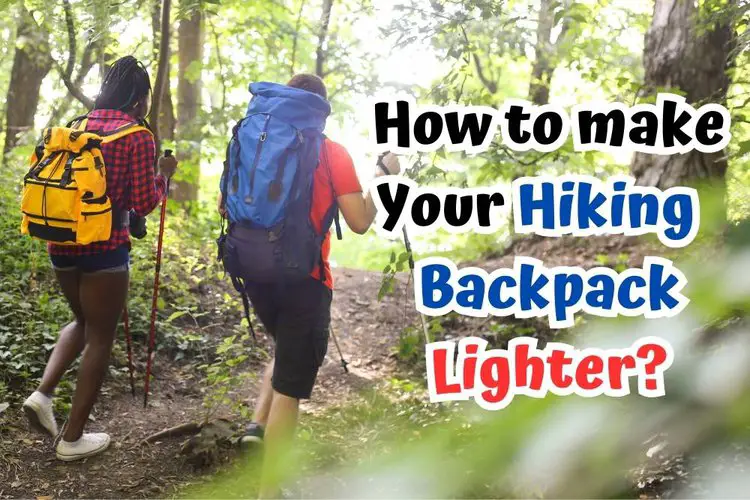I’ll never forget the time I signed up for a guided backpacking trip with some friends. I was excited to spend a few days in the wilderness and explore a new trail, but I quickly realized that I was in way over my head.
As we set off on the trail, I felt confident and well-prepared. But as the hours ticked by and we continued to climb higher and higher into the mountains, I began to feel the weight of my backpack pressing down on me.
At each rest stop, I found myself struggling to catch my breath and feeling like I was holding everyone else back. And when we finally made it to our campsite, I collapsed in exhaustion and frustration.
Luckily, one of my friends suggested we go through our backpacks and see what we could leave behind. Together, we discarded bulky clothing items, extra toiletries, and heavy snacks we hadn’t eaten yet.
As we set off on the trail the next day, I felt like a new person. My backpack was lighter and more comfortable, and I was able to move more easily and confidently on the trail.
That experience taught me the value of packing light, which has now become a habit on every hiking trip I go on.
In this article, I’ll share practical tips on how to make your hiking backpack lighter, so you can also enjoy a more comfortable and enjoyable hiking experience.
Contents
- 1. Choose a Lightweight Backpack
- 2. Use Lightweight Gear
- 3. Consider Your Clothing
- 4. Pack Only Essential Items
- 5. Pack Multi-Use Items
- 6. Pack Lightweight Food and Snacks
- 7. Minimize Your Toiletries
- 8. Consider the Water Source
- 9. Use Compression Sacks and Packing Cubes
- 10. Organize your backpack Smartly
- 11. Follow a Hiking Plan
- 12. Adjust Your Backpack
- 13. Share the Load
- 14. Re-evaluate Your Gear After Each Hike
- Conclusion
1. Choose a Lightweight Backpack
One of the most effective ways to reduce the weight of your hiking backpack is to choose a lightweight backpack.
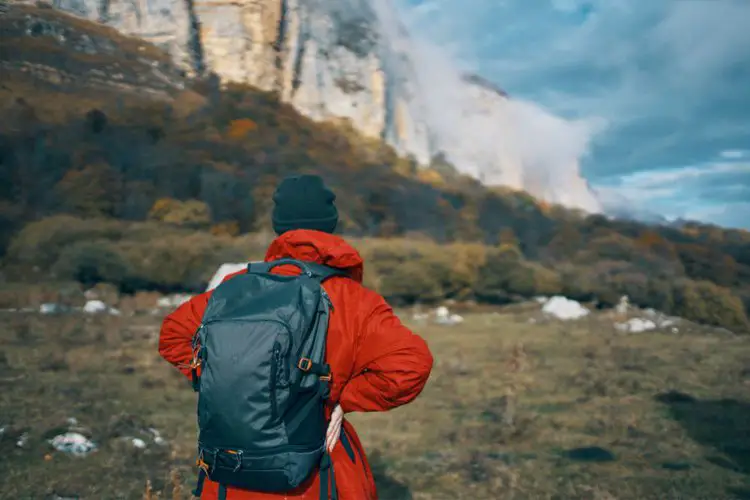
Look for backpacks made with lightweight materials such as nylon, polyester, or Dyneema.
- DURABLE. Made with high quality material, ultra-light, tear and water resistant .The extra strength...
- COMFORTABLE. Breathable mesh shoulder straps with plentiful sponge padding help relieve the stress...
- MULTI COMPARTMENTS. One main zipped compartment including two separators help you further organize...
Last update on 2023-11-10 / Affiliate links / Images from Amazon Product Advertising API
Additionally, consider the size of the backpack and choose one that is appropriate for your needs. A larger backpack may seem like a good idea, but it will only encourage you to carry unnecessary items.
2. Use Lightweight Gear
In addition to choosing a lightweight backpack, you can also lighten your load by using lightweight gear.
Look for lightweight camping equipment, such as a lightweight sleeping bag, tent, and stove.

Consider investing in a lighter sleeping pad, such as a foam pad or inflatable pad, that is comfortable enough to meet your needs but still lightweight enough to keep your pack weight down.
- 2" THICK SLEEP SUPPORT - Want to sleep comfortably anywhere? Then you will love this backpacking...
- LIGHT & PORTABLE - Our camping mat weighs only 14 oz and packs down to the size of a thin water...
- TEAR-RESISTANT WITH HEAVY-DUTY RIPSTOP NYLON FABRIC - These lightweight sleeping pads are made of...
Last update on 2023-11-10 / Affiliate links / Images from Amazon Product Advertising API
Opt for lightweight and compact options when it comes to electronics, such as a lightweight headlamp or a compact portable charger.
3. Consider Your Clothing
Your clothing can also contribute to the weight of your backpack. Opt for lightweight, moisture-wicking clothing that is appropriate for the weather conditions. Avoid cotton clothing, which can be heavy and take a long time to dry if it gets wet.
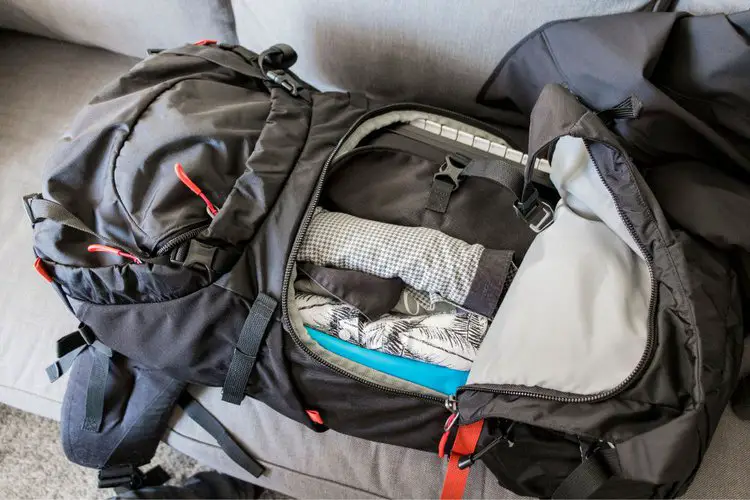
Additionally, consider wearing lightweight hiking shoes or trail runners instead of heavy hiking boots, especially if the terrain is not particularly rugged.
- A wide toe box lets your toes spread and relax.
- Produced using animal free products and processes.
- Removable sockliner (insole) if you want a "more barefoot" feeling.
Last update on 2023-11-11 / Affiliate links / Images from Amazon Product Advertising API
4. Pack Only Essential Items
When packing for your hike, it is important to pack only the essential items. Take time to plan your hike and consider the length of your trip, the weather conditions, and the terrain.
Pack clothing appropriate for the weather, lightweight food and snacks, and essential safety items such as a first aid kit and a map.
- DESIGNED BY EMERGENCY CARE EXPERTS: Be emergency-ready with our 100-piece first aid kit. Developed...
- POCKET-SIZED & PORTABLE: Our emergency first aid kit is lightweight and compact (7.5" x 5.2" x 1.5")...
- PREMIUM-QUALITY MEDICAL SUPPLIES: We manufacture our outdoor first aid kits in a modern facility,...
Last update on 2023-11-11 / Affiliate links / Images from Amazon Product Advertising API
Leave behind any unnecessary items such as heavy books or luxury items like makeup or jewelry.
5. Pack Multi-Use Items
Packing multi-use items can help you reduce the overall weight of your backpack while still ensuring you have everything you need for your trip.
For example, a bandana can be used as a face mask, a sweatband, or a towel, while a buff can be worn as a hat, a scarf, or a headband.
- Large Size: 22 x 22 inches.
- Comfortable Material: 100% polyester. They dries quickly; Soft; Fewer wrinkles; Color doesn't fade.
- 16 Colors: 16 colors to suit all of your clothing and hair styles. Orange, Dark Blue, Green, Red,...
Last update on 2023-11-11 / Affiliate links / Images from Amazon Product Advertising API
6. Pack Lightweight Food and Snacks
Food and snacks can also add weight to your backpack, so it’s important to choose lightweight options.
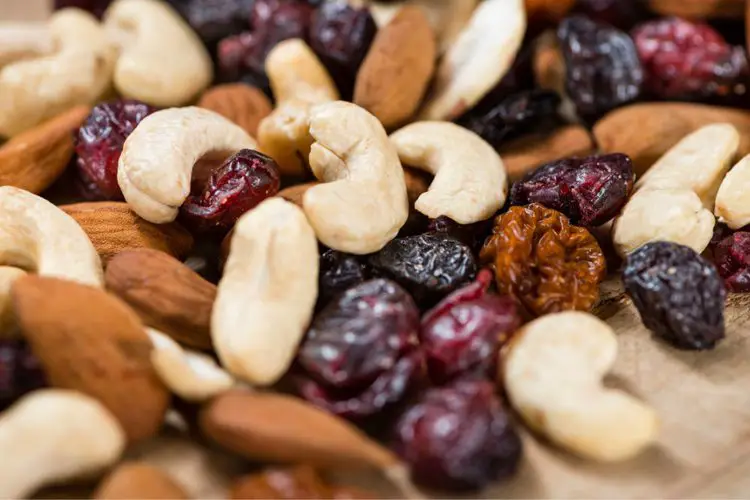
Opt for dehydrated meals or lightweight snacks such as energy bars or trail mix.
- Protein is an essential part of muscle tissue formation, strengthens the immune system, and keeps...
- Project Verified Non-GMO, No Artificial Ingredients, Gluten Free, Vegan, Certified Kosher
- Made from only the best, most premium whole nuts, dried fruit and seeds, our delicious trail mix...
Last update on 2023-11-11 / Affiliate links / Images from Amazon Product Advertising API
Avoid packing heavy cans or bulky containers, and consider re-packaging your food in lightweight, resealable bags.
7. Minimize Your Toiletries
Toiletries can add unnecessary weight to your backpack, so it’s important to pack only what you need.

Consider using travel-sized toiletries or packing items that have multiple uses, such as a soap that can be used for washing your hands, body, and hair.
- THIS VARIETY PACK INCLUDES: Dr. Bronner's Pure-Castile Bar Soaps are made with organic oils that are...
- MADE WITH ORGANIC OILS THAT ARE GENTLE and EFFECTIVE: We don't add any chelating agents, dyes,...
- NO SYNTHETIC PRESERVATIVES, DETERGENTS, OR FOAMING AGENTS: Our Pure-Castile Bar Soap is made with...
Last update on 2023-08-01 / Affiliate links / Images from Amazon Product Advertising API
8. Consider the Water Source
Water is an essential item for any hiking trip, but it can also be one of the heaviest items in your backpack.
Instead of carrying all of the water you need for the entire trip, consider using a water filter or purifier to source water from nearby streams, lakes, or rivers.
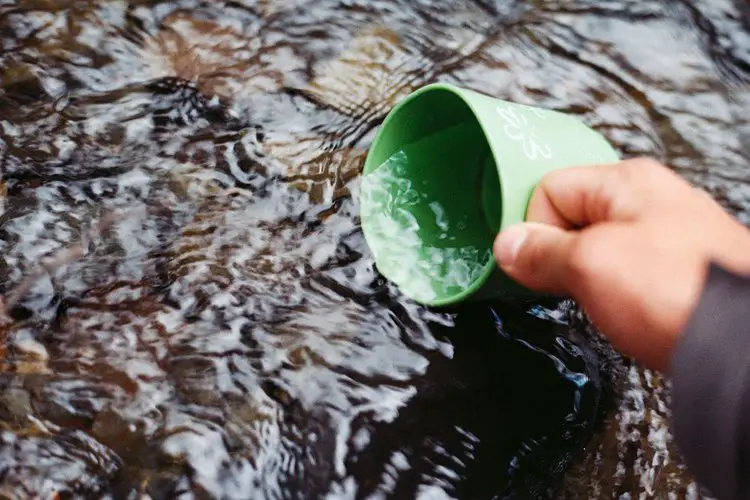
You can also plan your route around water sources to minimize the amount of water you need to carry at any one time.
- PORTABLE - sturdy and comfortable to drink from while on-the-go; rolls up for compact travel when...
- LEAKPROOF - patented twist cap and lid prevents water leaks; hinged cover shields drink spout in...
- HEALTHY - made of 100% food-grade materials; BPA-free, BPS-free, phthalates-free, lead-free, and...
Last update on 2023-11-11 / Affiliate links / Images from Amazon Product Advertising API
9. Use Compression Sacks and Packing Cubes
Compression sacks and packing cubes can help you pack your gear more efficiently and reduce the bulk of your backpack.
Use compression sacks to compress your clothing and sleeping bag, and packing cubes to organize your gear and keep everything compact. This can also make it easier to find what you need when you’re on the trail.
Last update on 2023-11-11 / Affiliate links / Images from Amazon Product Advertising API
10. Organize your backpack Smartly
To organize your backpack effectively to reduce the weight of your hiking backpack, you can pack heavier items closer to your back, as this can help distribute the weight more evenly and reduce strain on your shoulders.
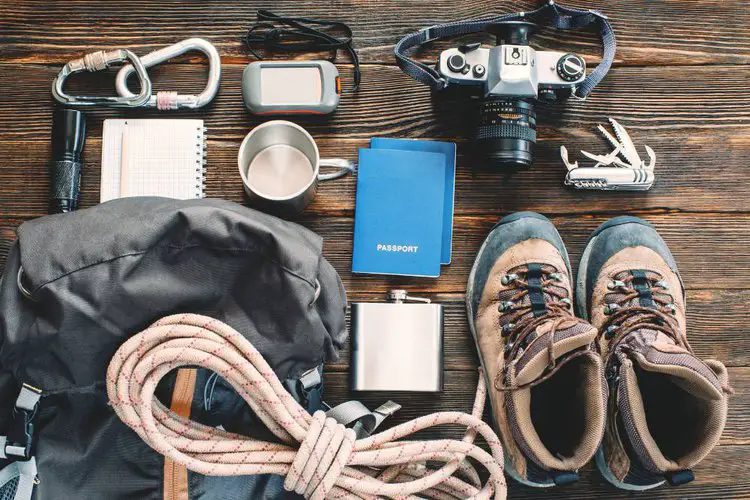
Consider the shape of your backpack and pack accordingly. For example, if your backpack has a narrow bottom, try to pack heavier items towards the top of your bag to prevent it from tipping over.
Don’t forget to utilize any extra space in your backpack, such as the pockets or straps, to further distribute weight and reduce the overall load.
11. Follow a Hiking Plan
Following a hiking plan can also help you pack smarter and lighter.
Take time to research the trail you plan to hike, including the terrain, weather conditions, and any potential hazards. This will help you pack only the essential items and avoid unnecessary weight.
Additionally, consider the water sources along the trail and plan to refill your water bottles or hydration bladder as needed, rather than carrying extra weight.
12. Adjust Your Backpack
Finally, it’s important to adjust your backpack properly to ensure it fits comfortably and distributes the weight evenly.
Adjust the shoulder straps, hip belt, and load-lifter straps to ensure a snug and comfortable fit.
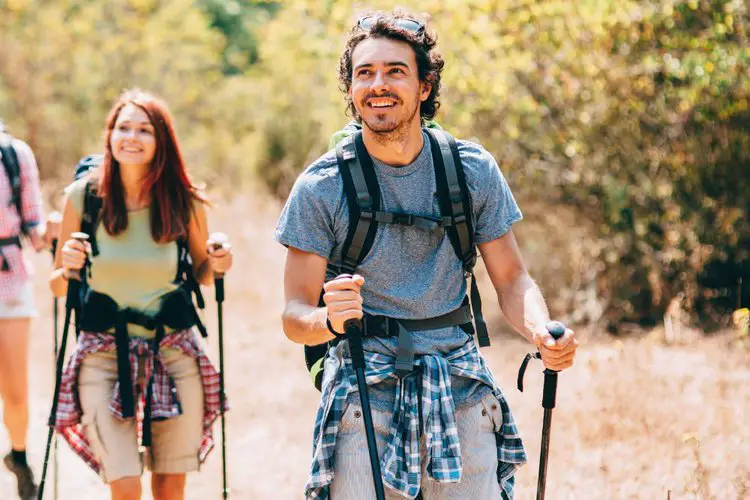
Additionally, make sure the weight is distributed evenly between the hip belt and the shoulder straps, with the majority of the weight on your hips.
If you’re hiking with a group, consider sharing the load by splitting up the gear among the group.
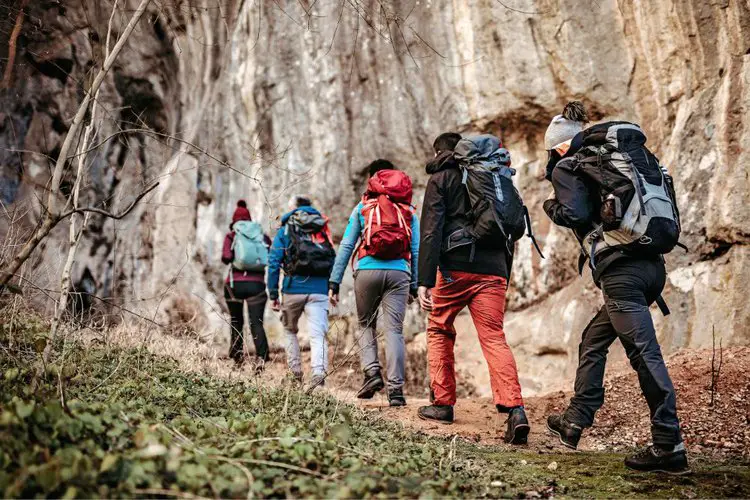
For example, one person can carry the tent, while another person carries the stove and cooking supplies. This can help distribute the weight evenly and reduce the burden on each individual.
14. Re-evaluate Your Gear After Each Hike
After each hike, take time to evaluate the gear you brought with you and consider what you used and what you didn’t use.
This can help you refine your packing list for future hikes and avoid bringing unnecessary items.
Additionally, make note of any items that were particularly heavy or cumbersome to carry and look for lighter alternatives for next time.
Conclusion
In conclusion, making your hiking backpack lighter is a key aspect of enjoying the great outdoors. We hope this article has given you some helpful tips and tricks for reducing the weight of your backpack without sacrificing necessary gear or comfort on the trail.
Remember to assess each item carefully and prioritize the essentials, opt for lightweight and durable gear, and utilize smart packing methods to optimize space and minimize weight. Additionally, always pack for the specific conditions of your trip and test your gear before heading out on longer hikes.
With a little bit of planning and mindfulness, you can greatly enhance your hiking experience and explore nature with greater ease and comfort. We wish you happy trails and many memorable adventures to come!

